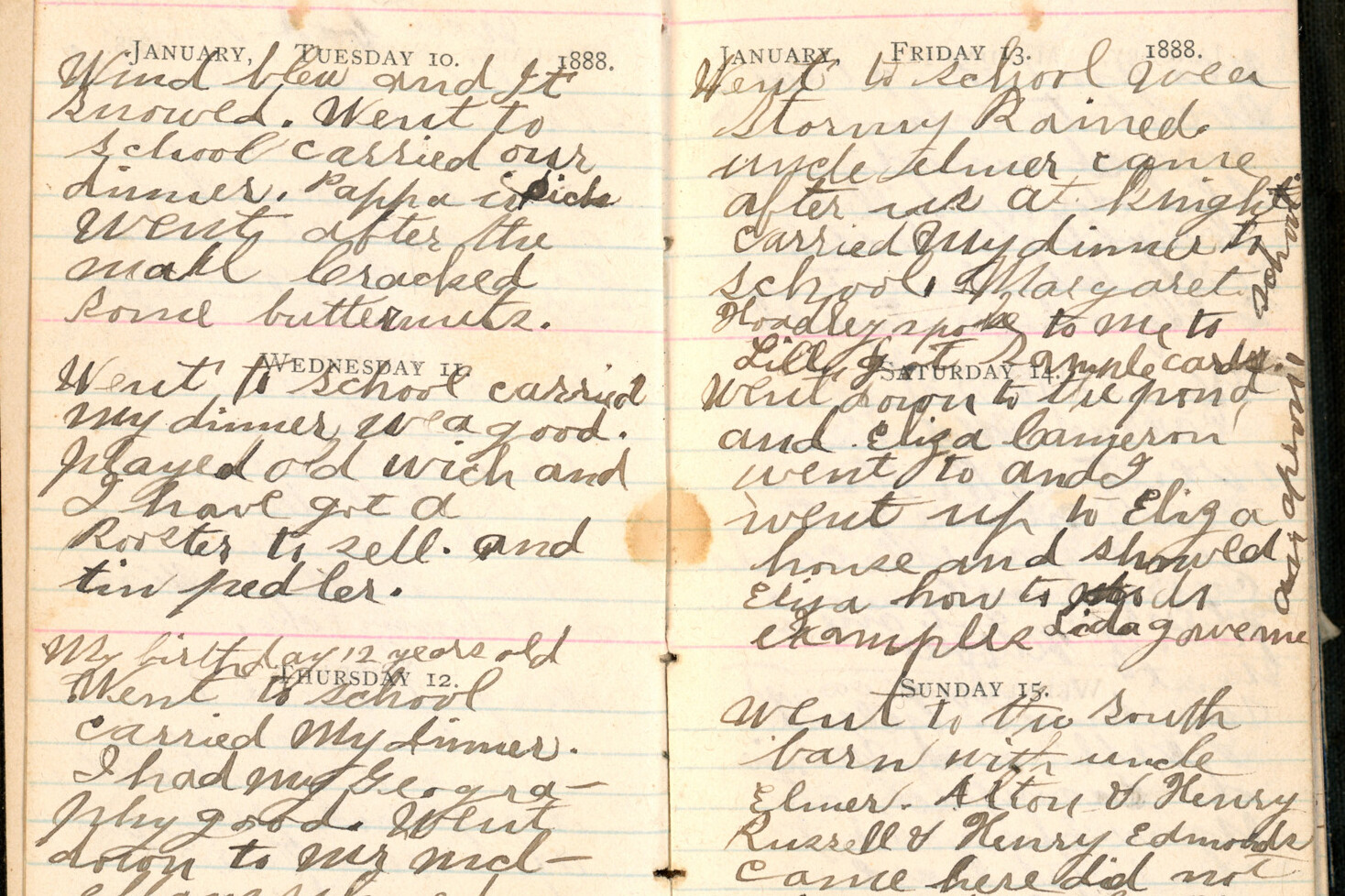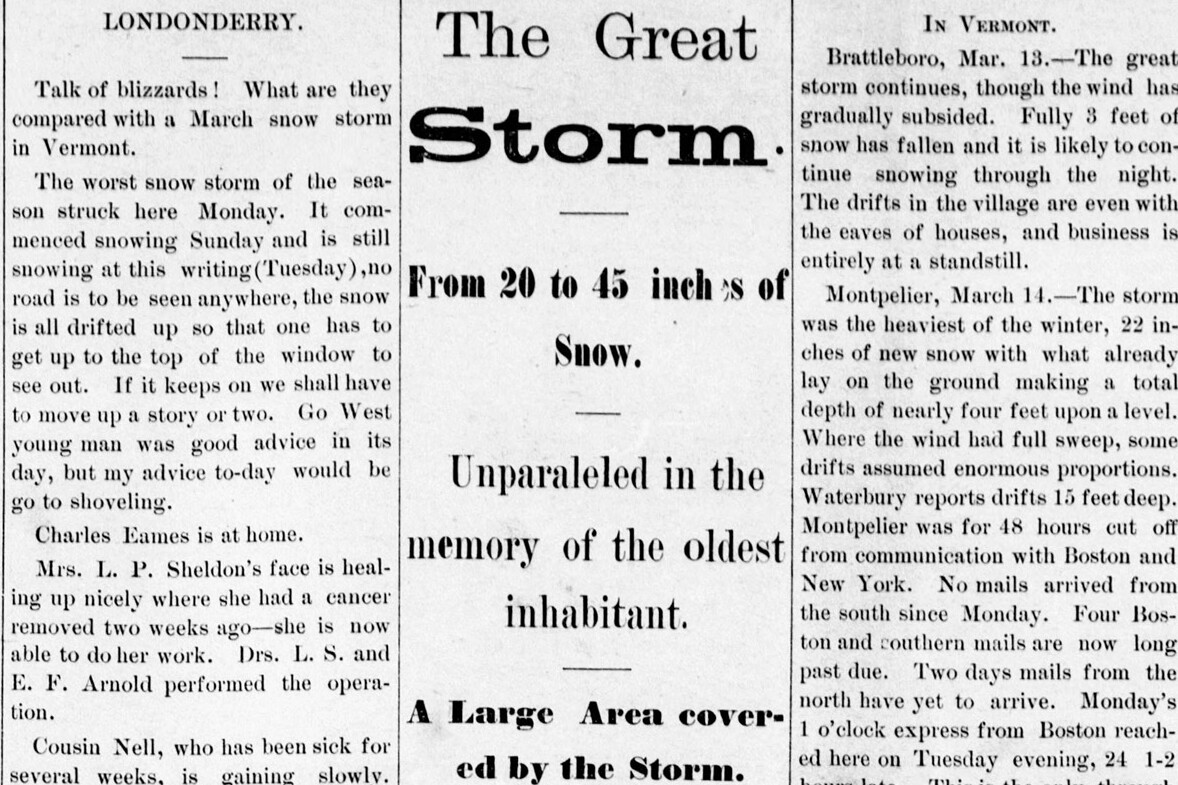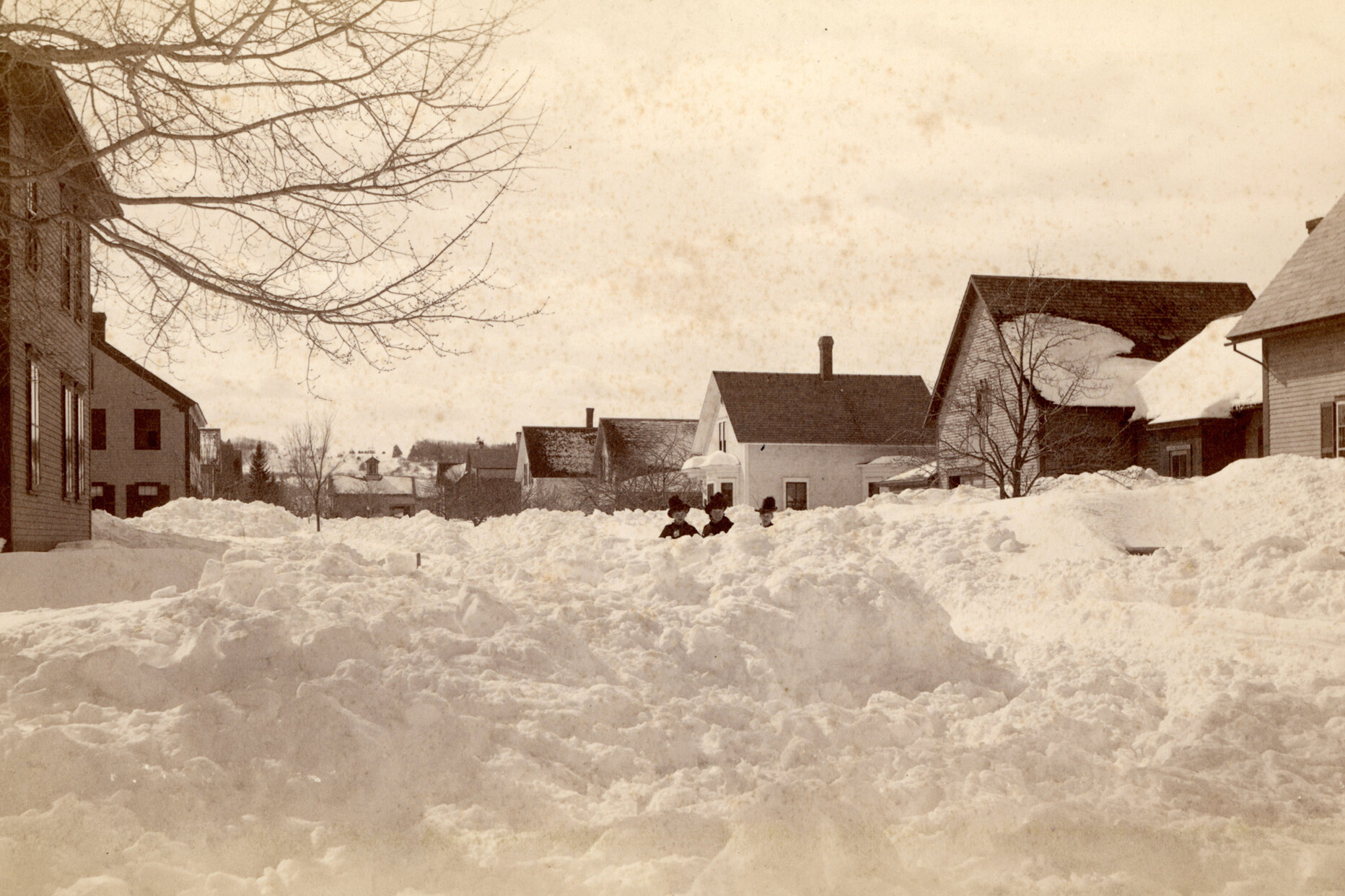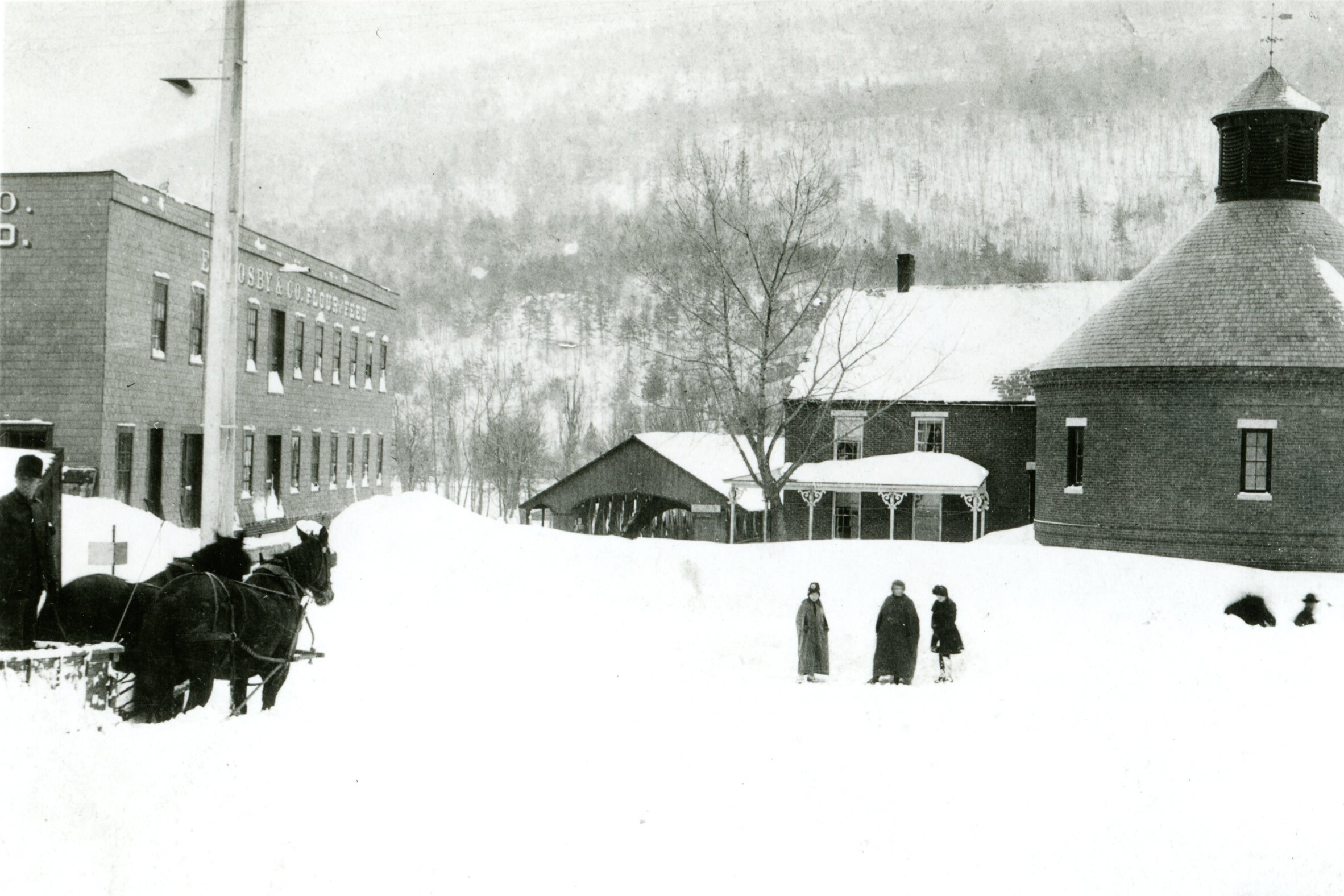Blizzard of 1888
What is it like to live through an historic event?
Clara Doty grew up on a farm in Tinmouth, Vermont. She kept a diary(a daily recording of a person’s activities or thoughts) in 1888, when she was 12 years old. On Sunday, January 1, she wrote “Ther 20 above. Wea bad.” This means the temperature on the thermometer was 20 degrees above zero. And the weather was bad.
Like Clara, many Vermonters observed the weather and wrote about it in their diaries. The weather was important because many people worked outside on farms. Clara walked to school in good and bad weather. On January 9, she wrote that the weather was good and she “went out doors and played.”
During school break in March, Clara went to stay with her Aunt Ella in Middletown Springs. On Saturday, March 10, Clara wrote that the weather was good and “thawed(melted because of warmer temperatures).” But Sunday was “stormy” and the next day it “snowed.”
On Tuesday, March 13, her diary entry was all about the weather. “at home all day snow was piled mountains heights snowed all day. did not go out doors at all.”
At the time, Clara did not know that this storm was the Blizzard(a heavy snowstorm with strong winds) of 1888. The Londonderry Sifter newspaper called it “The Great Storm.” They described it as, “The biggest snow storm known during the present generation.” Londonderry had 30 inches of snow. Brattleboro received over 40 inches.
The wind blew the snow into huge piles. William Hack, a farmer in Orwell, wrote in his diary on Tuesday, March 13, “Blew terribly hard from the north all day + snowed most of the time. Never had such a storm. Drifts 10 + 12 ft high. No mail nor no nothing.”
In 1888, people could not check the forecast(a prediction that says what will happen before it happens) for weather in the future. On the first day of the storm, a telegraph(a system to send messages over wires or radio) message warned people in Brattleboro of cold weather coming from the west. But they did not know how bad the storm would be. They could not predict how much snow they would get.
The storm kept many people from getting mail and news. The snow was so deep that trains could not get through with mail or passengers(someone who rides in a train or other vehicle). In some places, workers had to clear off the railroad tracks with shovels. After a few days, Vermonters learned that the storm covered most of New England. Boston and New York City also had a lot of snow and wind.
As the storm passed, people knew that it was an unusual and historic(important or famous in history) storm. The Vermont Phoenix newspaper reported that J. C. Howe took photographs of Brattleboro streets full of snow. Through photographs, diaries, and newspaper reports, Vermonters left a record of their experience during the Blizzard of 1888.
Thinking About History
Historians ask questions to think deeply about history.
The Vermont Phoenix newspaper reported that “There was a milk famine which lasted until the milkmen got into town – some of them on Wednesday and some of them not until Thursday morning.” What food would you run out of during a long snow storm?
Did students in 1888 get a snow day because of the storm? The Burlington Weekly Free Press newspaper wrote, “There was no session of the public schools Tuesday, teachers and pupils alike being unable to reach them.” What do you think it was like to live through the Blizzard of 1888?
Learn More
Follow the links below to explore related topics.
Read more of the Londonderry Sifter newspaper article
See photographs of Woodstock, Vermont after the Blizzard of 1888
Look at images from Keene, NH, after the storm
Learn about “Snowflake” Bentley and photographs of snow
See photographs of snowflakes taken by “Snowflake” Bentley during the Blizzard of 1888
Read more stories about Vermont weather
Listen to the podcast How do meteorologists predict the weather? from But Why:
Try writing your own diary entries. Ther. means temperature (or thermometer) and wea. means weather.
Copy and paste this citation to show where you did your research.
Vermont Historical Society. "Blizzard of 1888." Vermont History Explorer. Accessed January 6, 2026. https://sitemaps.vermonthistoryexplorer.org/blizzard-of-1888



